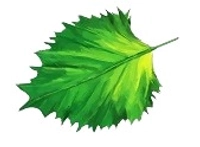Cassia Siamea (Yellow Cassia or Siamese Cassia)
Cassia Siamea, commonly known as Yellow Cassia or Siamese Cassia, is a fast-growing, medium-sized deciduous tree native to Southeast Asia. Known for its bright yellow flowers and lush green foliage, this tree is often planted for its ornamental beauty and its ability to provide shade in tropical and subtropical climates. It is a hardy and low-maintenance tree, making it a popular choice for landscaping in gardens, parks, and roadsides.
Benefits:
- Aesthetic Appeal: The Yellow Cassia produces striking, vibrant yellow flowers in large clusters, which bloom in the summer months. These showy flowers make the tree a beautiful addition to any landscape, attracting attention and adding a splash of color to gardens and parks.
- Fast Growth: Cassia Siamea is a fast-growing tree, which means it can quickly provide shade and aesthetic value. Its rapid growth makes it an excellent choice for those looking to establish a tree canopy in a short amount of time.
- Shade Provider: With its broad, dense canopy, the Yellow Cassia provides excellent shade, making it an ideal choice for planting in areas where shade is needed. It is perfect for creating cool, shaded spaces in gardens, along streets, or in parks.
- Low Maintenance: Once established, the Yellow Cassia is relatively low-maintenance. It is tolerant of a wide range of soil types and environmental conditions, including drought, making it a great choice for areas with less water availability.
- Wildlife Attraction: The vibrant yellow flowers of the Cassia Siamea attract a variety of pollinators, including bees and butterflies. This makes it a valuable addition to gardens or landscapes designed to support local wildlife.
Plant Care Instructions:
- Sunlight: Cassia Siamea thrives in full sunlight and requires at least 6-8 hours of direct sunlight each day to promote healthy growth and abundant flowering. Plant it in a location that receives ample sunlight throughout the day.
- Soil: The Yellow Cassia prefers well-drained, loamy or sandy soil. It can tolerate a variety of soil types, including slightly acidic to neutral soils. Ensure the soil is well-drained to avoid waterlogging, which can lead to root rot.
- Watering: While the Yellow Cassia is drought-tolerant once established, it benefits from regular watering during the growing season, especially in dry spells. Water deeply to encourage deep root growth, but avoid overwatering, as this can cause root rot.
- Fertilization: Apply a balanced fertilizer during the growing season (spring and summer) to encourage healthy growth and vibrant flowers. Organic compost can also be used to improve soil quality and provide essential nutrients.
- Pruning: Prune the tree to remove dead or damaged branches and to maintain its shape. Regular pruning helps improve airflow and sunlight penetration, promoting better growth and flowering. Avoid heavy pruning, as it can impact the tree's natural form.
Common Problems and Solutions:
- Yellowing Leaves: Yellowing leaves may indicate a nutrient deficiency, particularly a lack of nitrogen or iron. Apply a balanced fertilizer or compost to restore nutrients and improve the tree’s health.
- Flower Drop: Flower drop can occur due to environmental stress, such as extreme heat or drought. Ensure the tree is well-watered during dry spells and avoid exposing it to excessive heat or stress.
- Pests: Cassia Siamea can attract pests such as aphids, caterpillars, and scale insects. Regularly inspect the tree for pests and treat infestations with neem oil or insecticidal soap to keep the tree healthy.
- Root Rot: Root rot can occur if the tree is overwatered or planted in poorly drained soil. Ensure the tree is planted in well-drained soil and avoid excessive watering to prevent waterlogging.
- Fungal Diseases: Fungal diseases like leaf spot or powdery mildew can affect the tree. To prevent this, avoid overhead watering and ensure good air circulation around the tree. If fungal issues arise, apply fungicides as needed.
Please Note: Images are for reference purposes only. Actual product may vary in shape or appearance based on climate, age, height, etc. The product is replaceable but not returnable. Plants will be delivered in black nursery poly bag or pot unless mentioned on the product page.
